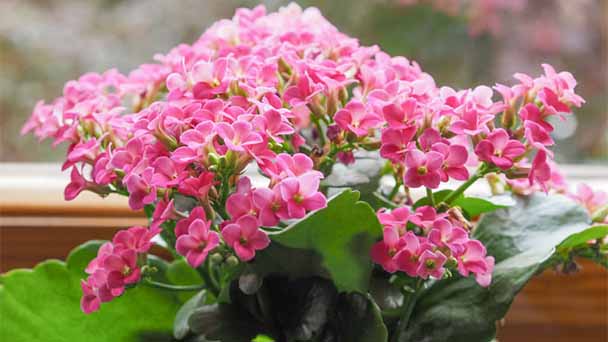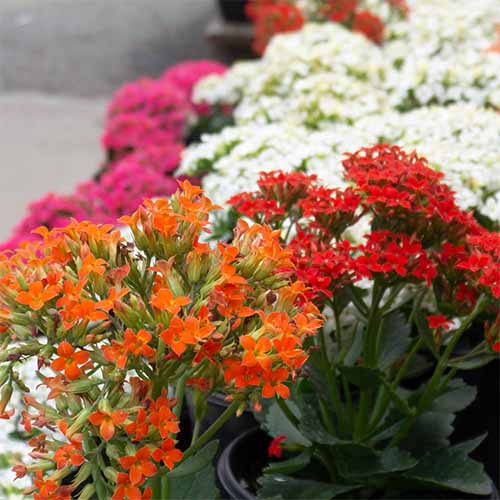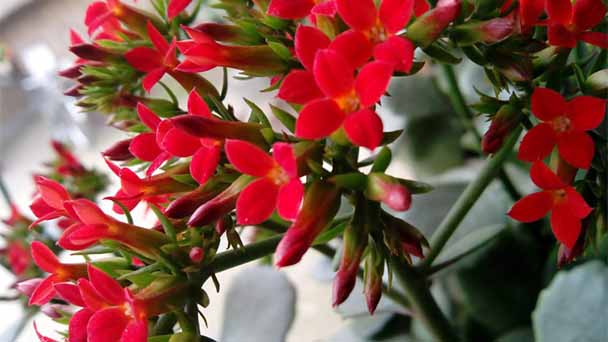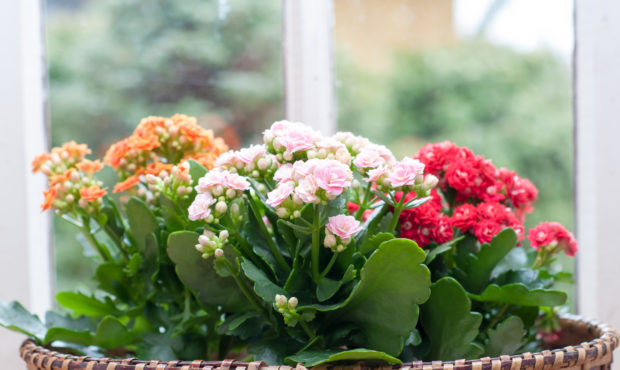Kalanchoe Profile
Written by Joy
Sep 09 2021

Kalanchoe is a perennial or shrub-like succulent of the Crassulaceae family and is usually transported as a potted plant. The genus Kalanchoe includes more than 100 species of plants, but only a few are often seen in cultivation. Kalanchoe are native to arid regions and they are popular succulents.
Kalanchoe morphological characteristicsKalanchoe growth habit and growing environment and distributionLightWaterTemperatureSoilFertilizerKalanchoe Longevity flower varietiesKalanchoe cultivation
Kalanchoe morphological characteristics
The four-petal flowers of Kalanchoe gathered at the stem tip are red, orange, pink and yellow, and the flowers that bloom from winter to spring add bright colors to seasonal potted plants, but the colors are poor. Modern hybrids are known for their interesting leaf forms or flowers. Poinsettia, cactus, and longevity flowers are the mainstay of holiday and flower shop trade.
Kalanchoe growth habit and growing environment and distribution
These growth conditions will keep your Kalanchoe family healthy and bloomingLight
Kalanchoe likes bright, sunny places, especially during the summer growing season. In winter, consider a south-facing window.Water
The water temperature of Kalanchoe is moderate throughout the summer, and watering is reduced in winter. Let the soil surface dry out between watering, and in winter, the plants can almost dry out-they grow in the low humidity of the winter home. Observe the fleshy leaves for signs of water damage.Temperature
Kalanchoe likes warmth. Don't let it fall below 55°F.Soil
The ordinary potting soil mixture is good.Fertilizer
Gardeners ought to use liquid fertilizer twice a week in summer, or use slow-release pellets.Many kinds of longevity tea produce small seedlings along the edge of the leaves that can be potted individually. These types include K. pinnata-air plants, K. frerensis and the more popular plant, Kalanchoe-K.
Blossfeldiana and K. manginii can reproduce through leaves or small tips. To propagate through cuttings, you’d better cut off a few inches long at the beginning of the growing season and regenerate in warm, moist soil. Considering collecting cuttings to increase the chances of rooting and retaining moisture is necessary. Madagascar is a place of origin of Kalanchoe plant, which is widely distributed in East Africa, South Africa, the Middle East and Asia, and entered Japan in 6 years. Only one species in this genus comes from the Americas, of which 56 species are from southern and eastern Africa, while there are 60 species in Madagascar. It is also found in Southeast Asia and China.
Kalanchoe plant is a common edible plant for caterpillars of Red Pierrot butterflies. After laying eggs on the leaf beetle and hatching, its larvae will burrow into the leaf beetle and eat their internal cells for nutrition.
Kalanchoe Longevity flower varieties
K. blossfeldiana: By far, it is the most popular longevity flower, large head flowers of various colors. Although they naturally bloom in spring, they are forced to bloom throughout the year.K. manginii: Big pendant with flowers.
K. porphyrocalyx: There are also pendant flowers, making an excellent suspension garden.
K. beharensis: It’s awarded for its pale silver-green color and its velvety donkey ear leaves.
K. pinnata: It has fleshy, green leaves with small seedlings along the edges, known as the mother of a thousand people.
Kalanchoe cultivation
Kalanchoe plant can be used as one of the good choices for ornamental indoor plants and succulent garden plants. They are easy to reproduce, and their low water requirements and a variety of colors make them popular among gardeners. Kalanchoe is a typical case of asexual reproduction. For bryophytes such as air Kalanchoe pinnata, the new individuals they produce will grow with the nutrition of small plants in the depressions on the edge of the leaf edge, also known as embryos. At a certain stage, these small plants will fall off and take root in the right place. However, no male of this genus that can flower and produce seeds has been found so far.
Double pendant Carrancho makes excellent hanging plants. You should pay attention to common household pests such as aphids, spider mites and scales. In small-scale pests, wipe them off with a damp cloth, but more extensive cases may require the use of environmentally friendly pesticides.
Latest Updated
- Benefits of Bugleweed - 7 Science-backed Health Benefits
- Bugleweed Dangers & Side Effects - Is It Poisonous?
- How to Plant Evergreen Trees - What You Should Know
- When to Plant Evergreens - Grow Guide for Evergreen Trees
- 12 Wonderful Evergreen Shrubs for Your Garden
- 12 Popular Evergreen Plants with Pictures for Beginners
- When And How To Prune A Lilac Bush Like a Pro
- How to Grow & Care for Lilac Vine (Hardenbergia Violacea)
- Japanese Lilac Tree (Syringa Reticulata) Care & Propagation Guide
- Shumard Oak Pros and Cons - What to Know
Popular Articles
- Winter maintenance of Antirrhinum Majus
- How to Grow Terminalia Mantaly Tree
- How to Grow and Care for Crossostephium Chinense
- How to grow Antirrhinum Majus in spring
- Peristeria Elata (Dove Orchid) Profile: Info & Care Guide
- Underwatered Snake Plant (Sansevieria Trifasciata) - Signs And How To Fix
- How to Care for Brazilian Jasmine Plant (Mandevilla Sanderi)
- How to Grow & Care for Graptopetalum Purple Delight in Summer
- Rosa Chinensis (China Rose): Plant Growing & Care Tips
- How to Care for Baby Sun Rose (Aptenia Cordifolia)
